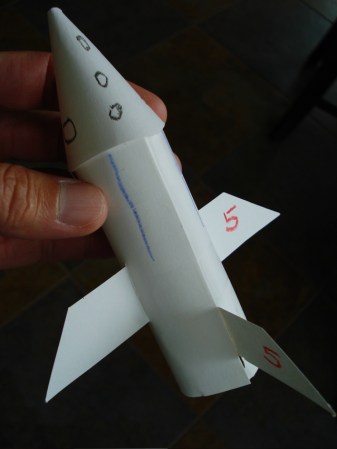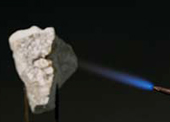

This story has been updated. It was originally featured in the June 2007 issue of Popular Science magazine and the plans are no longer available. We recommend you check out our more recent story about how to make the best paper airplane.
The single-sheet paper airplanes you made when you were a kid (or perhaps last week in your cubicle) were, well, kid stuff compared to this beefed-up paper craft, which uses an electric motor from an old pager or toy powered by a big electrolytic capacitor. Known as a “Gold Cap” and made by Panasonic, the capacitor charges from a battery pack and then metes out a steady flow of power to keep your propeller whirring for about 10 seconds—just long enough to send the flyer airborne and carry it between 30 and 100 feet. (You can also add a gearing system to squeeze out even more flight time.) We’ve created plans for an eAT-6 “Texan” airplane and put them online to get you started. Just think twice before blindly launching this one soaring over the wall of your cube.
- Project: build a motorized paper airplane
- Cost: $14.29
- Time: 3 hours
- Difficulty: easy | | | | | hard (Editor’s note: 2/5)
What you’ll need
- Paper eAT-6 plan
- Two 9-by-12-inch sheets of smooth Bienfang Bristol Board (19 cents ea.; dickblick.com)
- T-6 Texan Vacu Canopy ($2.96; squadron.com; #SQ9523)
- Panasonic 2.5-volt 3.3F Gold Cap ($5.22; digikey.com; #P6966-ND)
- Small electric motor (free; salvaged)
- Plastic propeller (57 cents; towerhobbies.com; #LXHHV9)
- AA four-battery holder (90 cents; digikey.com; #BH24AAW-ND)
- Two header pins (27 cents; jameco.com; #103185-3)
- Four AA batteries ($3.99)
Instructions
1. Print the parts. Download the eAT-6 plan PDF and print each sheet on a separate piece of Bristol Board, or any thick paper that works in your printer.

2. Assemble the body. Carefully bend and glue the fuselage and wings into shape. Add the cowling and elevator, and glue the wings in place. Decorate it with decals or markers.

3. Motorize it. Solder the Gold Cap to the motor, and solder two 3-inch wires to the Gold Cap terminals on one end and header pins on the other. Slide the power system into the plane, and route the header pins out of the tail. (The capacitor should sit near the rear of the cockpit.) Glue the engine-nose disk to the front of the cowling, and add the cowling trim ring. Affix the plastic propeller to the electric motor’s shaft.

4. Fuel up. Carefully bend each wing so it’s angled up slightly. Install the AA batteries into a battery holder, and connect it to the header pins sticking out of the plane to juice the capacitor. Charge the plane until the motor is spinning at its maximum rpm, and disconnect it.

5. Fly away. Hold the plane and point it into the wind. Launch using a flinging motion with your arm, not your wrist. The plane will fly in a left-hand circle, the diameter of which depends on the amount of deflection that you bend into the rudder. Bend the elevator slightly upward to make it climb.















